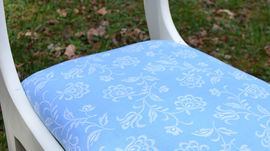Rustic Shelf
- Caroline Sturman
- Jun 1, 2016
- 3 min read
Background:
So I’m in the process of decorating my first home and am going room by room (keeps me sane). I started with the smallest room in the house…our master bathroom. I found a couple décor things from Ross and a cute money tree from Home Depot but it needed more. I wanted a shelf that could provide some additional storage for us. I watch this lady on YouTube and love how she organizes her life. She turned her bathroom into a little Zen zone and I was somewhat going for a similar thing in our
bathroom. This was all on accident but I love it! She had built these floating shelves and essentially, I wanted to do the same thing but with the wood grain showing. Keepin’ it earthy, ya’ll! Here's the YouTube link.
Why so tricky? So my husband and I are not carpenters by any stretch of the imagination so our edges weren’t completely straight. This made for an even more rustic look (again, not on purpose at all) since our boards weren’t perfect. Sometimes you just have to let go and make the best of what happens in life!

Instructions:
1. Measure and Saw. I essentially needed 10 short pieces of wood (4 for each of the two squares and then 2 more for the “L” part). So I picked up two oak boards from Home Depot. Just peruse the boards and find which ones that have the most appealing grains to you. I believe our pieces are 9 inches long…just try to envision how big you want your shelves to be and go from there. Also please make sure someone is in the house while you’re sawing…safety first, people!*
2. Stain. The wood was bare (or naked) meaning it didn’t have any products on it. I picked out a dark walnut stain and it went perfectly with another piece of décor we already had in the bathroom. There’s nothing too tricky about staining, but I do stain a small section and then wipe over it with a rag to remove an excess stain. I stained everywhere including the cut edges. Once the stain has dried fully (I let it dry overnight just to be safe), you can resume to the next step. Remember to clean your paintbrush with Mineral Spirits if using an oil-based stain.
3. Seal it. I used Polycrilic Clear Satin (this is not glossy) over every part of the board. Once dry, I did a second coat on the faces of the board where it will get the most wear.
4. Screw Together. This is definitely a two person job so grab your friend, Mom, or male whoever and get them to help you! I'd recommend using screws and not nails so for a good grip. We found fancy brass screws at Home Depot. You want to make sure the screws can go through the full thickness of about 1 ½ boards. We stacked the boards before screwing together just to make sure the boards would lay how we wanted them too. Remember, our boards were not so straight. At the end you should be left with two squares and one "L" piece for a total of three individual parts that can stacked like this...

5. Mount on the Wall. Obviously I feel most people are capable of hanging something on a wall. But I wanted to let you guys know how we decided to hang ours up. We got this hanging hardware from Home Depot. A leveler, measuring tape, and pencil were our best friends. Just do your best…take it one step at a time!
That’s all, folks! Drill responsibly!
* Please have someone with you when you're sawing and wear eye/ear protection. It’s embarrassing enough when you don’t saw perfectly straight so don’t add to the humiliation by also getting wood shards in your eyes. End soapbox.




















Comments